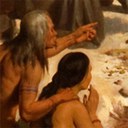0127 The "Brazilian Native" on Display: Indianist Artwork and Ethnographic Exhibits at the World's Fairs, 1862-1889
Identifiers (Article)
Identifiers (Files)
Abstract
Between 1862 and 1889, the Empire of Brazil participated in the most important world's fairs in Europe and North America. Although these mass gathering events focused on technological development and commodities, representations of Brazil's population and culture also played an important role in the elites' project to promote a "progressive and civilized" country abroad. Nevertheless, the exhibition planners not only displayed machines, scientific instruments and manufactures goods. For them, it was equally important to combine ideas of modernity with the celebration of a glorious pre-Columbian past. By this line of thought, the Empire of Brazil emerged as the result of a long-term teleological process, taking ancient indigenous cultures as its historical starting point. However, this discourse, as exemplified by Indianist artwork and ethnographic exhibits, was highly ambivalent.
Statistics


License

This work is licensed under a Creative Commons Attribution-NonCommercial-NoDerivatives 4.0 International License.



